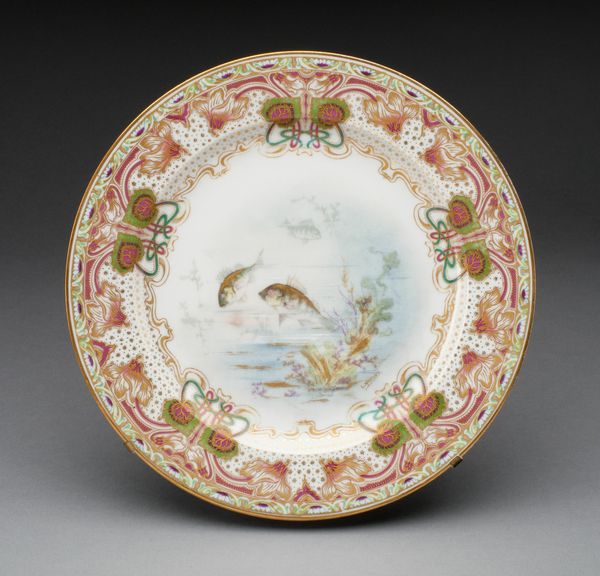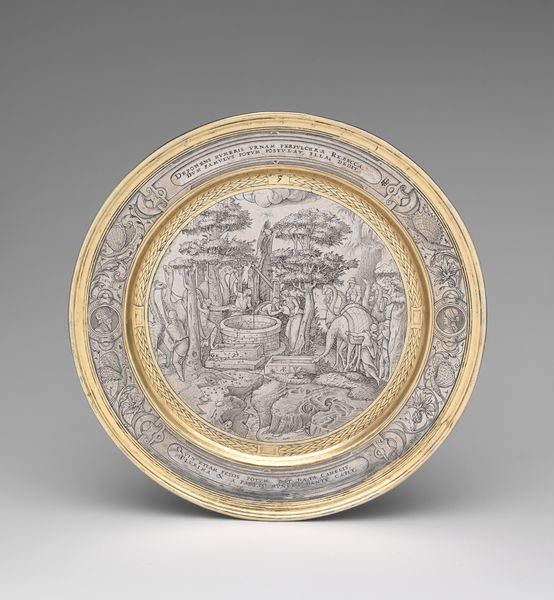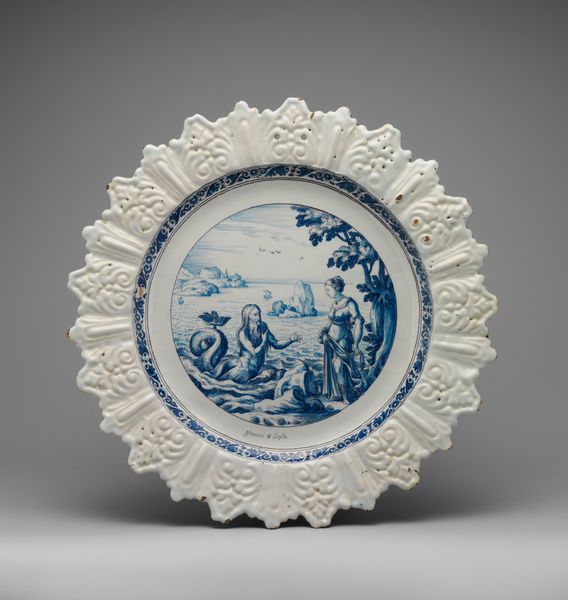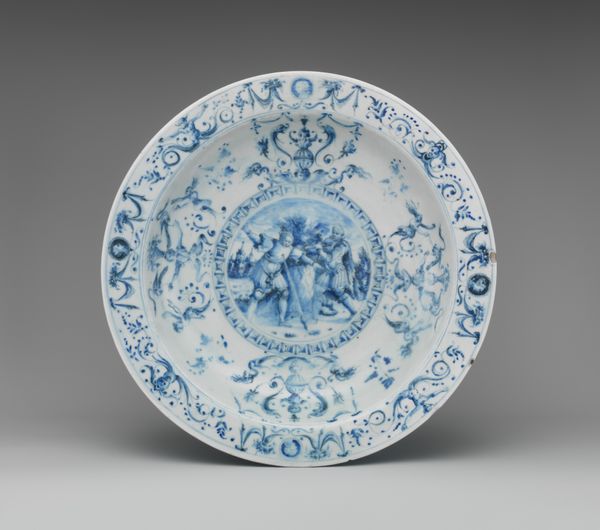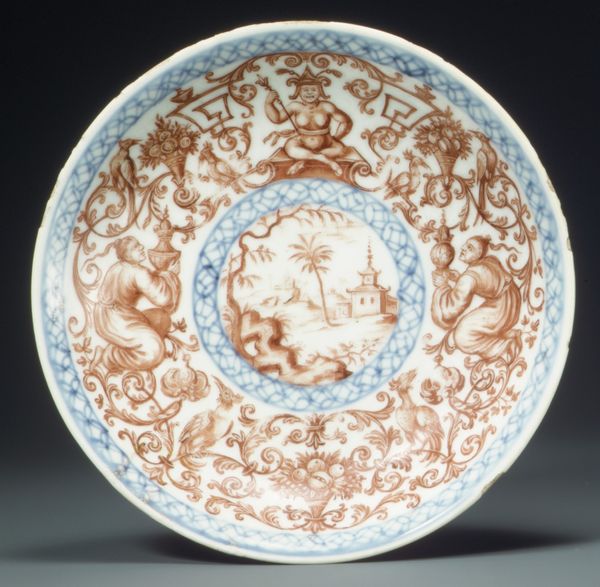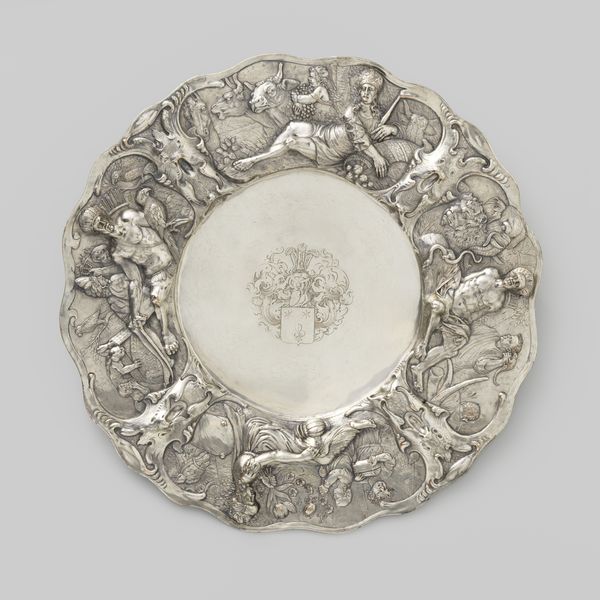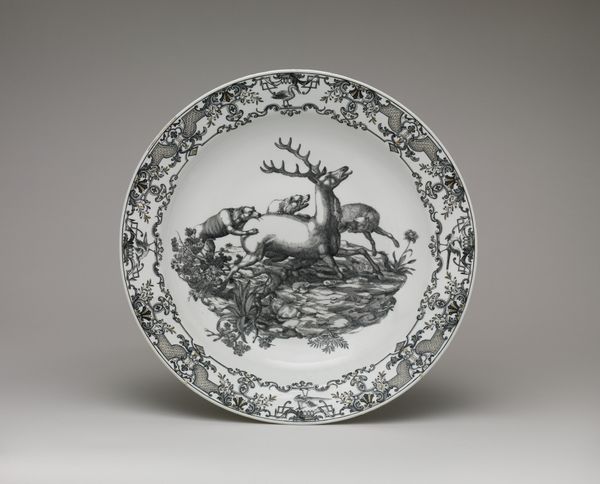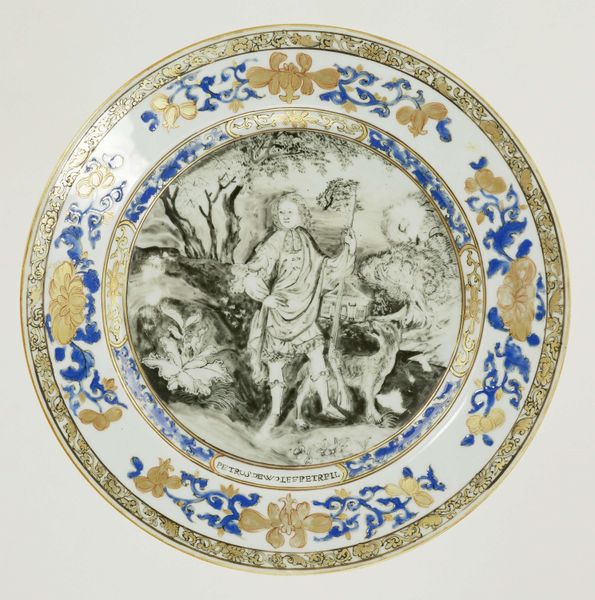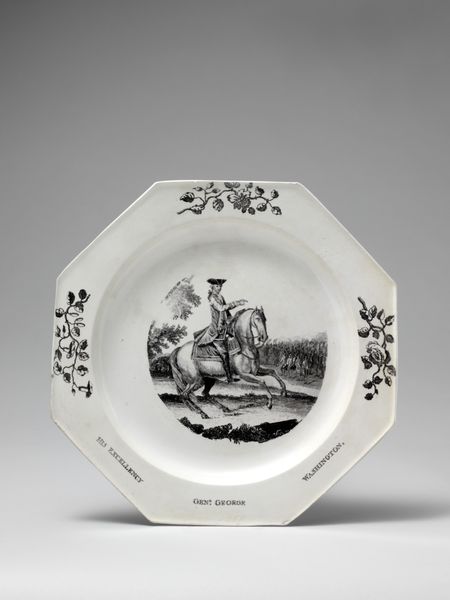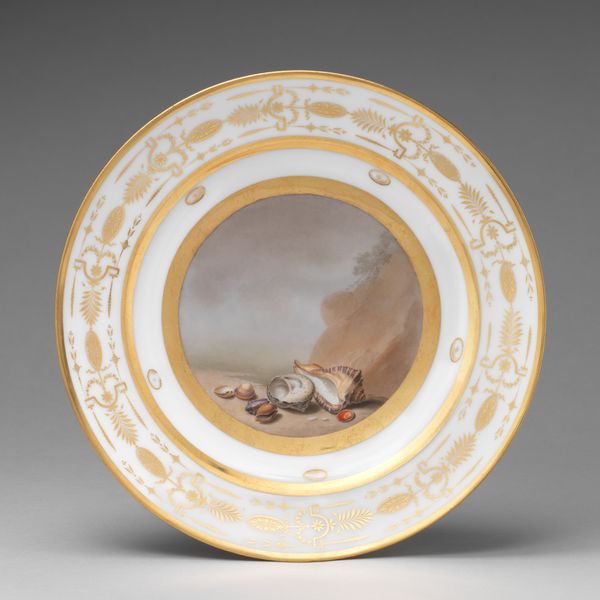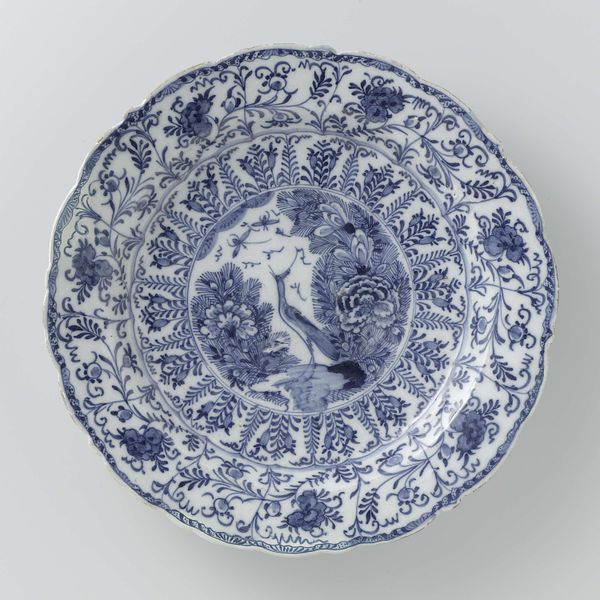
ceramic, earthenware
#
landscape
#
ceramic
#
earthenware
#
stoneware
#
wash background
#
england
#
ceramic
Dimensions: Diam. 10 3/8 in. (26.4 cm)
Copyright: Public Domain
Curator: Today, we're looking at a plate crafted between 1820 and 1837 by James and Ralph Clews. The piece, currently housed at the Metropolitan Museum of Art, is made from earthenware and depicts a landscape scene. Editor: The sepia tones create a sort of comforting, nostalgic ambiance. The composition itself, with the landscape nestled within the ornate border, feels very balanced. Curator: It's interesting to consider how transferware like this plate provided glimpses of idealized landscapes to people, often depicting scenes of a pastoral and perhaps aspirational lifestyle. Mass production changed how people saw the world. Editor: The interplay of textures is really interesting. You have the smoothness of the ceramic surface contrasting sharply with the detailed patterns of the foliage and the architecture, which gives the piece a tangible quality, despite being monochrome. Curator: Consider that landscapes such as these, when exported, promoted an imagined vision of domesticity at the expense of acknowledging colonial expansion and its impacts on both the human and natural landscape in the US during the 19th Century. How does that impact your understanding of such domestic imagery? Editor: I hadn't really considered that narrative. Technically, the use of repeating patterns along the border creates visual rhythm that frames and enhances the focal point, guiding the eye inward. I would love to hear about how ideas surrounding structuralism or semiotics would affect how one views such a work. Curator: Thinking about production and labor is unavoidable in this context. It allows one to move beyond decorative interpretation toward discussions of economics, class and how industrial advancements were linked with England's impact on a global scale. Editor: Thinking purely aesthetically, the design choices speak volumes about the engraver’s skillful rendering of light and shadow to add depth to such a simple form. Curator: It certainly opens a window into considering the complexities surrounding representations of the landscape. Editor: Ultimately, whether focusing on structure or broader narratives, the landscape's impact speaks to us today.
Comments
No comments
Be the first to comment and join the conversation on the ultimate creative platform.

